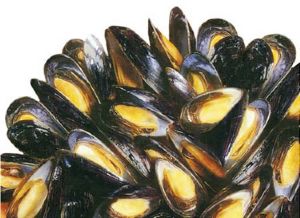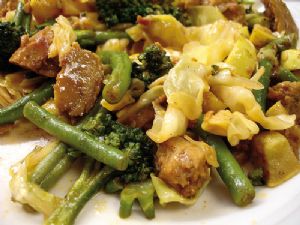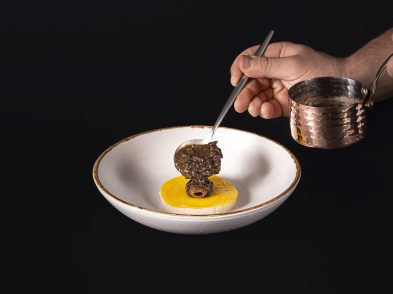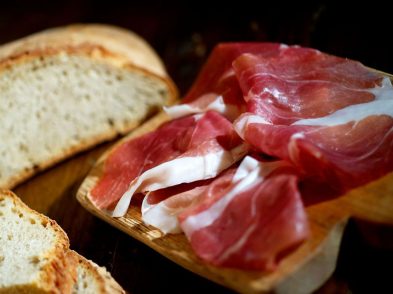If you’re having people over for a party on New Year’s Eve, you might
want to give them some food. Of course, there are some traditional Italian
specialties that you may feel expected to serve, and if you’re having a dinner
party, then we think that cotechino or zampone with the tried-and-tested
accompaniments of lentils and polenta takes a lot of beating. For the uninitiated, cotechino is a thick, very meaty sausage made with fatty cuts of
meat; zampone (pig’s trotter) is a
similar delicacy. Both are delicious.
However, a nice, thick slice of juicy pig
ankle might not be ideal for serving as finger food; and you don’t want your
mingling guests to be dribbling lentils down their shirts as they’re sipping
wine and engaging in some light, festive flirting. Far better, instead, to take
advantage of the other holiday foodstuffs that Tuscany has to offer to make
some truly memorable finger food.
If you go with canapés or a buffet, you can present your guests with a
mix of hot and cold food. Of course, Italy-and Florence in particular-is
legendary for its bar-based buffets, so consider stealing a couple of hints
from your favourite local aperitivo joint.
If time is tight, mix a variety of
ingredients-tuna, pesto, pureed olives or sundried tomatoes, radicchio, or peperoncini-each with mayonnaise, and serve with crostini. If you have more time, you might seek out slightly more lavish
ingredients and prepare them in a more interesting way. For example, a small
amount of crema di
tartufo, mixed with ricotta cheese
and a little salt and black pepper, goes a long way as a topping for crostini or blinis. Slice a red onion finely, stir in
a tablespoon of olive oil and a tablespoon of white wine vinegar, season well,
and then chill for an hour, then use this as a garnish. Alternatively, puree
some rocket with a little lemon juice and drizzle this over the snacks.
One of the best New Year canapés I’ve ever seen was a big piece of beef
fillet, roasted for a short time in the oven so that it was medium rare, and
cut into thick slices, before being served with a good hearty topping of
fresh-made pesto: the pesto had been made with Thai basil for an interesting,
strong flavour, but you can recreate the effect by adding a teaspoon or so of
ground fennel seeds to the mix. Man-sized carpaccio,
you might say. Carpaccio is always a
good option for finger food-no need to go too fancy, just serve thin slices of
beef, tuna or salmon (or, of course, swordfish if you feel like showing off).
The traditional accompaniments of rocket and parmesan are boosted by truffle
oil, and you might want to try wafer-thin shallot slices, coriander and sweet,
peeled citrus fruit segments (clementines, for example) for the fish.
If you’re missing the sausage-based side of New Year’s food, take
everyday salsicce, remove the skins, and fashion the meat into balls. Roll
these in flour and fry them lightly before threading them onto cocktail sticks
with small pieces of red pepper or slices of courgette. Arrange them on a
foil-lined tray with the sticks pointing up, season, and roast for 10 minutes
in a hot oven. Serve them directly off the tray.
For vegetable-based snacks, cut butternut
squash into chunks, and then roast it with olive oil and fresh rosemary until
it’s soft and starting to blacken at the edges. Then, grind some roasted
pumpkin seeds, season, and sprinkle them over the roasted squash. A balsamic
vinegar reduction (vinegar boiled with plenty of sugar until halved in volume)
works nicely with this, particularly if you pour it into a squeeze bottle,
chill until very viscous, and then top the roasted squash with decorative
swirls and stripes.
Recipe of the fortnight:
Lentils with bacon and vegetable3dl green
lentils, rinsed
2dl white
wine
4dl water
1
classico stock cube
1 large
red onion, peeled
and very
finely diced
2
carrots, peeled and very
finely
diced
1 stick
celery, very finely diced
Salt and
pepper to taste
120g
pancetta cubes
1 small
bunch fresh parsley,
chopped
The vegetables for this dish need to be very
finely diced: the pieces should be about the same size as the lentils
themselves.
For the onion, peel and then halve the
vegetable from top to bottom. With the root facing towards you and the cut side
facing down, cut each half into strips almost through to the root. Then,
turning them around 90 degrees on the board, cut along the onion with the knife
parallel to the table a few times-again, towards and almost through to the
root. Finally, chop the onion halves with downward strokes. This will give you
a very fine dice.
Prepare carrots and celery by slicing them
into fine julienne strips, gathering them into bunches, then cutting these into
tiny chunks along their lengths.
Mix all of the ingredients except the parsley
in a large, oven-proof dish. Cover with tinfoil. Cook for two and a half hours
in a low oven (140 deg C), uncovering, stirring and then re-covering every now
and again. Finally, stir in the chopped parsley and serve with fried fish,
schnitzel, sausage, fried pork, steak, roast chicken-anything.
Ingredient of the fortnight:
Zampone
More column inches need to
be dedicated to this amazing foodstuff. Available in slices, pre-prepared
whole, or in its un-boned, un-stuffed form from the butcher, pigs’ trotters,
are one of those things you either really like the idea of or really hate the
idea of. However, there’s nothing to be scared of.
If you’ve never eaten a pig’s foot, but have
tried the belly, rind or cheeks of the animal, you won’t be too surprised by
the taste and, crucially, the texture. The meat of a pig’s trotter is very soft
and quite rich and fatty-but only if it’s cooked very slowly over a long time,
as it should be. The skin also takes on a very distinct, gelatinous consistency
that some people hate and some love. A lot of slightly gross-sounding
ingredients require a bit of a leap of faith before they’re eaten, and
sometimes the payoff isn’t worth the bravery, but trotters are very good
indeed.
Before being stuffed, the trotter has most of its bones removed, and
it’s filled with a rich mix of fatback pork, pork belly and lean meat,
sometimes with starchy ingredients, spices and herbs added. Some people
traditionally favour white pepper and vinegar with pig’s feet. Stuffing them
full of yet more richly flavoured and textured meat, and then slow cooking them
and serving on a bed of dark, smoky-tasting lentils, seems just as civilized.







